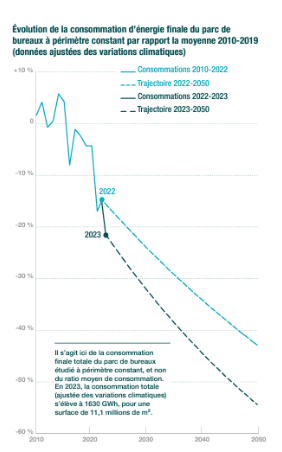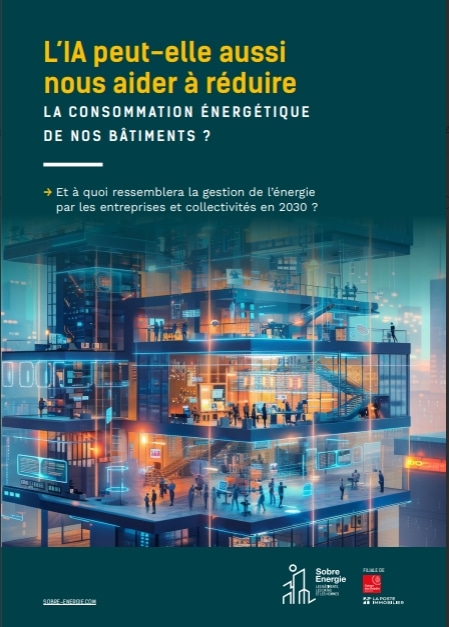Good news, the energy performance of tertiary buildings is progressing: very marked for offices, encouraging for health establishments, hotels and shopping centers, according to the latest barometer from the Sustainable Real Estate Observatory (OID) . A barometer based on a sample of 31,200 buildings and 113 million m2.
Rising prices, regulatory compliance, decarbonization: a tense context
Energy prices still rising
The year 2023, as in 2022, again resulted in an increasing energy bill:
- +57% on electricity prices
- +12% on gas prices
An encouraging context, therefore, to continue the efforts started as part of the energy sobriety plan launched in winter 2022 by the government.
Tertiary Decree, the first notes arrive
Each year, subject buildings are assigned Tertiary Eco Energy ratings, attesting to their consumption reduction trajectory with a view to the 2030 deadline.
According to our information from the Ministry of Ecological Transition, the 1st notes will be downloadable in January 2025 on the Ademe OPERAT platform, for declared consumption for the year 2023.
A poor Eco Energy Tertiary rating will reveal:
- Higher operational costs
- Degraded occupant comfort
- Work to be planned to catch up with the set trajectories
- Potential fines to come
All of these elements degrade the value of assets for sale or rental... but also the ability of managers to finance them!
Offices, on track to achieve the objectives of the Tertiary Decree
The decline in consumption is increasing
The average energy performance of offices is improving and reaching 130kWh (final energy)/m2/year in 2023:
- 5.6% in 2022 (+ 1.4% at constant climate)
- 6.6% in 2023 and even -7.1% at constant climate
Among the factors highlighted by the OID, the effects of sobriety plans in companies, energy prices still under pressure.
How to achieve the objectives Tertiary Decree
As a reminder, the Tertiary Eco Energy (DEET) system requires the reduction of final energy consumption by at least:
- 40% in 2030
- 50% in 2040
- 60% in 2050
compared to a reference year taken between 2010 and 2019.
Over the period 2010-2023, the trajectory of office consumption reduction decreases on average by 2% per year (compared to 1.4% over the period 2010-2022).
In detail:
- 40% of buildings have a final energy consumption of less than 100 kWh/m²/year
- 75% have a consumption of less than 150 kWh/m²/year.
As a reminder, the 2030 threshold of the Tertiary Decree in absolute value for offices, expressed in final energy, is typically located between 100 and 150 kWh/m²/year, depending on the type of offices considered (partitioned, open space, flex office, co-working) and the climatic zone of location.
If efforts continue, the Tertiary Decree objectives would therefore be achieved by 2050:

Health establishments, an encouraging decline for the Tertiary Decree
Over 2023, the energy consumption of healthcare establishments (hospitals, clinics, EHPADs) decreased by 4.3% at constant climate. An encouraging reduction made possible, thanks to quick-win actions (set temperature, GTB settings, etc.) with limited investments.
Identifying such rapid and impactful actions is possible thanks to energy audits. Thus, Sobre Energie recently supported the Carpentras hospital center.
In 2023, the increase in the number of patients and hospital days could have predicted increased energy consumption. The decline therefore seems more structural than cyclical.
Hotels, commerce, falling consumption
After an increasing year in 2022 (post-covid rebound), consumption in shopping centers is falling sharply: -14% at constant climate. And this despite increasing attendance.
Finally, the hotel sector confirmed its return to normal in 2023: -6.1% at constant climate. And this despite ever-increasing attendance.
